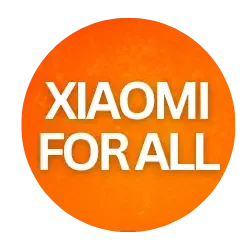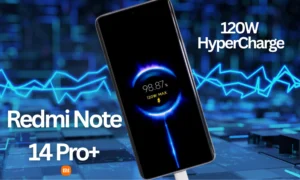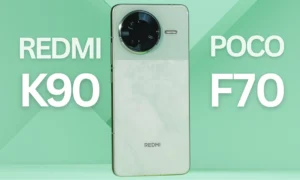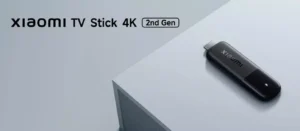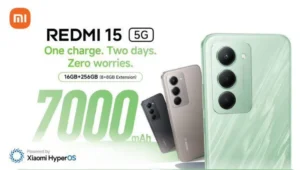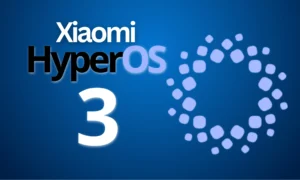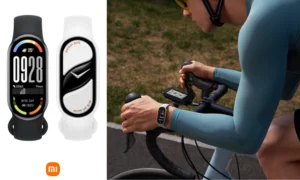New Redmi and Poco Phones Set to Revolutionize Budget Smartphones
Xiaomi is on the brink of transforming the budget smartphone landscape with its latest Redmi device, model number 25078RA3EL. Recently uncovered in FCC certifications, this phone features a staggering 6,000mAh battery and supports 33W fast charging. With the addition of HyperOS 2.2 and a spacious 6.9-inch display, it promises to deliver exceptional performance at an affordable price. A Poco variant has also surfaced in EEC certifications, showcasing Xiaomi’s strategy to offer this powerhouse under both the Redmi and Poco brands. Let’s dive into the exciting details surrounding these upcoming devices.

Unmatched Battery Life: 6,000mAh Capacity and 33W Fast Charging
The standout attribute of the new Redmi phone is undoubtedly its impressive 6,000mAh battery, which is likely marketed as 6,100mAh for typical usage. This colossal battery places it among the top contenders in the budget smartphone arena. It’s designed for users who demand power, including gamers and streamers, ensuring they can go longer without needing a recharge. Notably, the device supports 33W fast charging, allowing for rapid top-ups despite the large battery size. This feature makes it an ideal choice for those constantly on the move.
Xiaomi’s approach to balancing speed and affordability is clear, especially when compared to other models like the POCO M6, which also features 33W charging but with a smaller 5,030mAh battery. The Redmi’s larger capacity could provide up to two days of moderate usage or more than a full day of heavy use. This sets a new benchmark for budget smartphones, directly challenging competitors like Samsung’s Galaxy A-series and Realme’s Narzo lineup.
HyperOS 2.2: Enhanced Software Experience
The new Redmi phone will run on HyperOS 2.2, Xiaomi’s latest operating system based on Android 15. This version builds upon the features of HyperOS 2.0, which debuted in October 2024. HyperOS 2.2 promises enhanced performance, AI-driven capabilities, and improved cross-device connectivity. Users can expect faster app launches and smoother multitasking, along with new AI functionalities like image resizing and object removal.
Moreover, HyperOS 2.2 aims to refine user experience with updated widgets, a redesigned Control Center, and enhanced Always-On Display options. While some early users reported minor issues with HyperOS 2.0, such as uneven icon spacing and battery drain, it’s likely that Xiaomi has addressed these concerns in the latest iteration.
Impressive 6.9-Inch Display for Gaming and Multimedia
The Redmi phone boasts a 6.9-inch display, one of the largest in Xiaomi’s budget lineup. This expansive screen is perfect for media consumption, gaming, and multitasking, making it appealing to users who prioritize visual experiences. While details regarding the display technology—whether LCD or AMOLED—and resolution are yet to be confirmed, Xiaomi’s recent budget devices suggest a focus on delivering smooth and vibrant visuals.
The combination of a large display and the robust 6,000mAh battery positions the Redmi phone as a multimedia powerhouse. This device stands strong against competitors like the Samsung Galaxy A35 and Infinix Note 40, which offer smaller displays and batteries within the same price range.

Dual Branding Strategy: Redmi and Poco
The FCC listing for the Redmi phone is complemented by an EEC certification for a corresponding Poco-branded variant. This dual-branding strategy aligns with Xiaomi’s typical approach, where similar devices are released under both the Redmi and Poco names to target diverse audiences. Redmi models emphasize reliability and value, while Poco focuses on performance and features aimed at younger consumers.
The Poco variant is expected to share the same core specifications—6,000mAh battery, 33W charging, 6.9-inch display, and HyperOS 2.2—potentially with performance tweaks or a gaming-centric design. This strategic move allows Xiaomi to cater to a wider market while maintaining competitive pricing.
Anticipated Specifications and Features
Based on recent certifications and industry trends, we can infer several specifications for the upcoming devices:
| Feature | Expected Specifications |
|---|---|
| Processor | MediaTek Helio G99 or Snapdragon 6 Gen 1 |
| Camera Setup | Triple-camera: 50MP main, 8MP ultra-wide, 2MP macro |
| Connectivity | 5G, Wi-Fi 5, Bluetooth 5.3, NFC |
| Build | Glass/polycarbonate back, IP53 rating |
| Audio | Dual stereo speakers with Dolby Atmos |
These specifications align with Xiaomi’s strategy to deliver high-value devices in the $150-$250 price range, similar to the Redmi 13’s pricing in India.
Launch Timeline and Pricing Insights
The recent certifications indicate that the Redmi phone and its Poco counterpart are set for an imminent launch, likely in Q3 or Q4 2025. Speculations suggest a debut as early as late May 2025, although this may pertain to other models like the Poco F7. The anticipated launch price for the Redmi phone in China is around 1,200-1,500 CNY (approximately $165-$205), while the Poco variant may be priced slightly higher due to enhanced features.
In India, a crucial market for both brands, the expected retail price ranges from ₹12,999 to ₹15,999 (about $155-$190), competing directly with devices like the Realme Narzo 70 and Vivo T3x. Global availability, including Europe and Southeast Asia, is also likely following the initial launch in China.
Conclusion: A Game-Changer for Budget Smartphones
The upcoming Redmi 25078RA3EL and its Poco-branded sibling are poised to set new standards in the budget smartphone market. With a remarkable 6,000mAh battery, 33W fast charging, HyperOS 2.2, and a 6.9-inch display, these devices promise a premium multimedia experience without breaking the bank. As Xiaomi continues to innovate, these smartphones are expected to delight users across markets, including India and China. Keep an eye out for official announcements, as we anticipate more updates soon.
Budget smartphones with massive battery
Xiaomi is redefining budget smartphones with powerful features like a 6,000mAh battery and fast charging, setting new standards in the market.
Xiaomi, Redmi, Poco, budget smartphones, HyperOS, 6,000mAh battery
